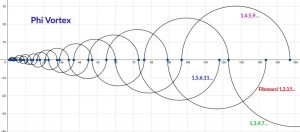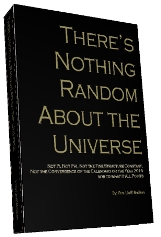Before we move on in the Torah, I’d like to point out that this Shemini/Pesach connection we’ve been discussing also connects to the 8 days of waiting before a circumcision, or brit milah , in that, as explained by the Arizal, the difference between matza (מצה) and chametz (חמץ) is the letter hei (ה) and chet (ח) and that the letter hei is a circumcised letter chet and that what we’re doing in forgoing chametz for the eight days is akin to a circumcision in that we’re cutting off our desires for the self alone.
Kabbalistically and/or spiritually, similarity of form represent a physical closeness and in terms of gematria, it indicates a special affinity between the words. Now, interestingly enough there are a very few words that express multiple affinities, but one pair is Pesach (פסח), Passover and Kemach, (קמח ) flour/meal. Both have three letters, both end in the letter chet (ח) of value 8, both have a total gematria value of 148 and both have an ordinal value of 40, or 5 x 8.
The ordinal value is the sum of the positioning of the letters within the Hebrew alphabet (i.e. mem is the 13th letter and has an ordinal value of 13. So as it happens both related words have ordinals value of 40, which is the numerical value of the letter Mem, whose ordinal value is 13, which if you’ve read our last few articles you know is connected to love (ahava) and mazal, as is the number 8.
Another pair of words with an even greater affinity is Mayim (מים), water and Melech (מלך ), King, both with gematria values of 90 and ordinal values of 36. Now, it may just be a coincidence but Kamach, (קמח ) flour and Mayim (מים), water are the two ingredients in Matzoth. If we add the two values we get 148 + 90 = 238, which is the value for Rachel, a prominent kabbalistic symbol for protection and of manifestation on an earthly level (malchut).
And if we add the two ordinal values 40+ 36 = 76 plus the kolel of 1 for the equation we get 77, mazal, or if we choose a kolel of 2 for the two ingredients, we get 78 which according to the Arizal is mazal in Aramaic and 3 times the Tetragrammaton ( יקוק ,יקוק ,יקוק) and also not-coincidentally “bread,” which would be chametz.
Just a note for anyone interested, R’ Chaim Vital explains that the 3 Tetragrammaton (יקוק ,יקוק ,יקוק) act as a visual meditation for supporting mochin, the brain.
Moreover, 238 + 76 = 314, the value of the Shin-Dalet-Yud (ש־ד־י), the name of protection on every mezuzah. And regarding the connection between Pesach and King, as Rav Yehuda Zvi Brandwein of blessed memory points out in one of his letters, the meaning of Passover is not a battle between Moses and Pharaoh, but a battle for the souls of the people between God and the Satan, the evil inclination, and the eating of matzoth on Pesach is a turning away from the desires for the self alone and the evil inclination and towards the King, Hashem.
As we strive to reach the tree-of-life reality, we need to examine the tree itself and find that the letters in chametz (חמץ) Ch.M and Z are also found in the tree-of-life (AZ ChYYM) and that the 3 that are not, AYY not only add up to 90, but also have the original value of 36, just like the phenomenonal affinity found between Mayim (מים), water and Melech (מלך ), King that we’ve written about in previous blogs.
What this means is not clear, but the Ayin (70) represents the 70 branches of the tree and the double Yuds represents the central column or trunk of the tree through which the water from above flows. While the chametz may be the bark.
And like the tree, we surround ourselves with chametz for protection, but it prevents the divine waters (light) to flow through us. Chametz is just the same pure flour and water as Matzah, but with the addition of yeast (the desire to receive for ourselves alone). It’s these desires that soak up the divine waters and prevent us from seeing the essence of the tree.


![Reblog this post [with Zemanta]](http://img.zemanta.com/reblog_e.png?x-id=add2b773-5f12-4e84-afe1-98c3e3c87293)


